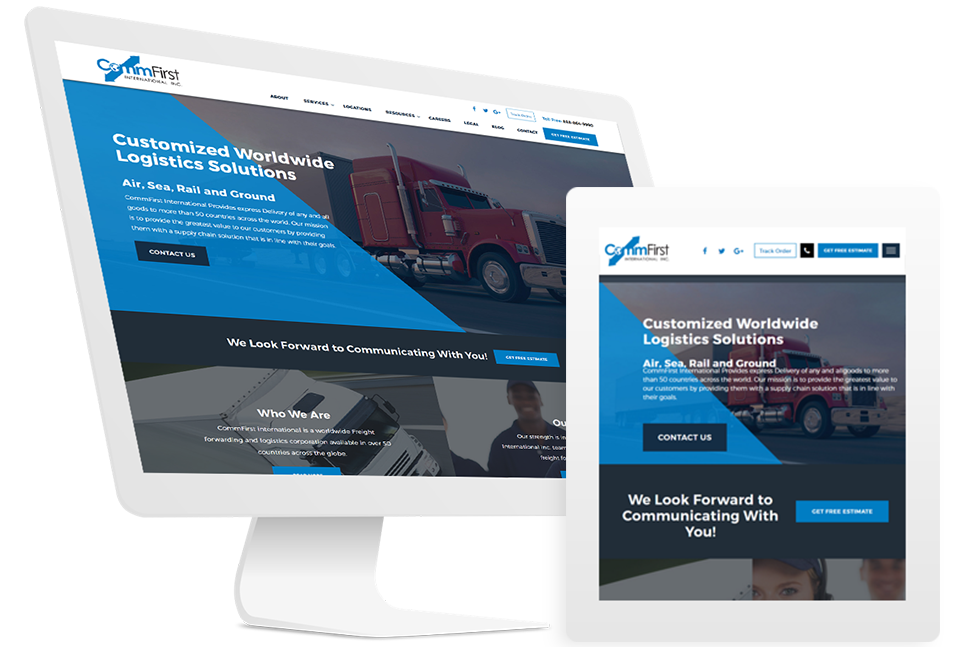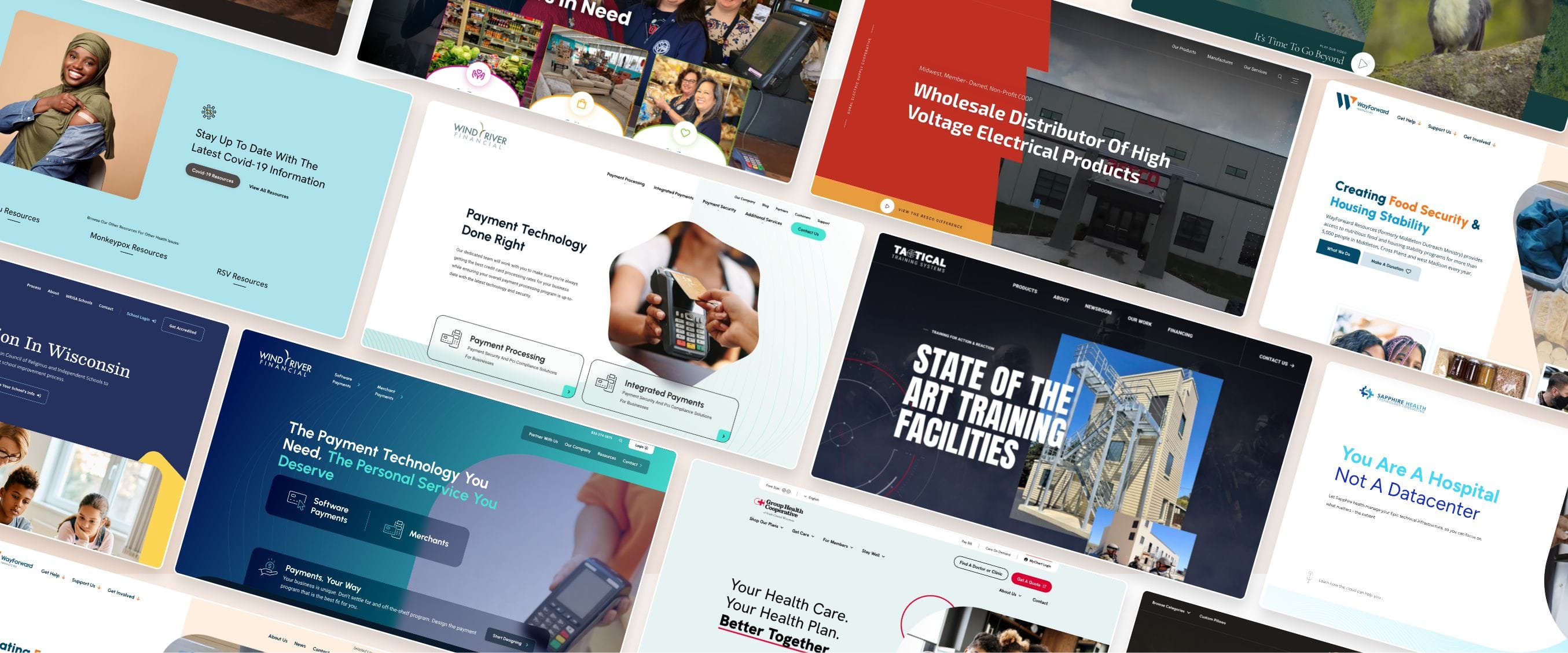Leading Tips for Developing an Impactful Internet Site Design That Converts
In today's electronic landscape, the value of an impactful website design can not be overstated, particularly when it involves converting visitors right into customers. To attain this, one have to think about a selection of aspects, including recognizing the target audience, prioritizing individual experience, and enhancing for mobile platforms. Moreover, the critical usage of engaging call-to-actions and a distinct visual power structure plays an essential role in assisting customers via their trip. As we discover these essential components, it becomes evident that the success of your internet site hinges on greater than just appearance; it requires a thoughtful approach to layout and capability.

Understand Your Target Audience
Understanding your target market is basic to efficient site style, as it lays the groundwork for developing an appealing customer experience. Identifying that your users are, including their demographics, choices, and behaviors, allows developers to tailor the website's content, design, and capability to satisfy specific needs.
Conducting thorough market research study is essential in this procedure. Studies, meetings, and analytics can offer beneficial insights into user expectations and discomfort points. By assembling this data, designers can develop user personalities that stand for different sections of the audience, making sure that design decisions are educated and relevant.
Furthermore, comprehending the target market helps in choosing ideal layout elements such as color systems, typography, and images that resonate with customers. A website that speaks directly to its target market fosters a sense of link and trust fund, urging longer sees and greater conversion prices.
Ultimately, a user-centered strategy to web site layout not just enhances customer fulfillment yet also supports business goals by driving involvement and loyalty. By prioritizing the needs and choices of the target audience, a web site can successfully offer its purpose and attain wanted end results.
Prioritize Customer Experience
To boost the total effectiveness of a website, prioritizing user experience (UX) is essential (Website Design). A properly designed UX makes certain that visitors can navigate the site easily, locate info promptly, and involve with material meaningfully. This causes increased individual fulfillment and higher conversion rates
Begin by implementing instinctive navigation. Menus needs to be practically structured, permitting individuals to situate crucial areas of the site with minimal initiative. Consistency in design components, such as shade schemes and fonts, fosters knowledge, which is vital for maintaining individual interaction.
Additionally, take into consideration the loading speed of your internet site. A hold-up of just a couple of secs can lead to substantial drop-offs, as individuals are less likely to wait on a slow-loading page. Simplifying pictures and optimizing code can enhance performance and preserve visitors.
Additionally, clearness in material presentation is essential. Usage concise, appealing language and damage up text with visuals to boost readability. By focusing on customer experience, you not only create a much more pleasurable environment for visitors however likewise enhance your brand name's trustworthiness. Ultimately, a concentrate on UX is a financial investment in the long-lasting success of your web try this web-site site.
Maximize for Mobile Devices
Maximizing for mobile phones is have a peek at this site vital in today's electronic landscape, where a raising number of customers access websites through smartphones and tablet computers. A mobile-friendly design not only enhances customer experience but additionally plays a significant role in improving internet search engine rankings. To achieve this, it is necessary to embrace a responsive style that immediately adapts to various screen dimensions and positionings.

Filling speed is one more critical factor; mobile users are usually much less patient and anticipate quick access to info. By focusing on mobile optimization, you ensure that your web site stays competitive and efficiently involves a more comprehensive audience.
Use Engaging Call-to-Actions
An internet site's efficiency usually rests on its ability to lead visitors toward wanted activities, making compelling call-to-actions (CTAs) vital parts of style. CTAs function as the crucial points that direct customers to involve with the website, whether that suggests buying, registering for a newsletter, or downloading and install a source.
To develop reliable CTAs, quality is extremely important. Use concise language that clearly communicates the activity you want the user to take. Phrases such as "Begin," "Sign Up Free," or "Store Now" not just share necessity yet also remove obscurity. The positioning of CTAs is just as crucial; they ought to be purposefully placed throughout the page to ensure they are quickly noticeable, especially in high-traffic areas.
Furthermore, consider making use of directional cues, such as arrowheads or images, to lead individuals toward these buttons. By concentrating on these elements, organizations can substantially enhance user interaction, driving Website Design conversions and ultimately accomplishing their website's goals.
Focus on Visual Power Structure
Effective internet site design relies greatly on a well-structured visual power structure that guides customers with content flawlessly. By organizing aspects in a fashion that focuses on info, developers can enhance individual experience and facilitate decision-making. This includes using size, color, comparison, and spacing strategically to accentuate one of the most critical elements of a page.
Making use of bigger font styles for headings and subheadings develops a clear difference between different sections, allowing individuals to check material easily. In addition, utilizing different shades for buttons and calls-to-action can capture individual attention and encourage interaction. Whitespace is an additional necessary part; it stops mess and enables individuals to concentrate on vital messages without interruptions.
Images and graphics ought to complement the text while also sticking to the well established power structure, enhancing the overall message (Website Design). Consistency in design aspects, such as color design and typography, additional reinforces the visual pecking order, making navigating user-friendly

Final Thought
In final thought, effective web site design demands an extensive understanding of the target audience, prioritization of user experience, and mobile optimization. Eventually, a well-executed website style serves as a critical element in driving individual actions and attaining company purposes.